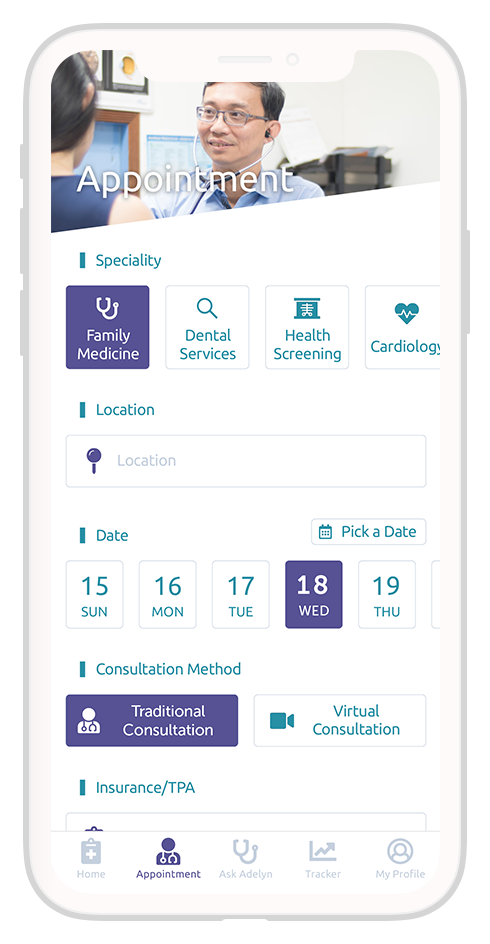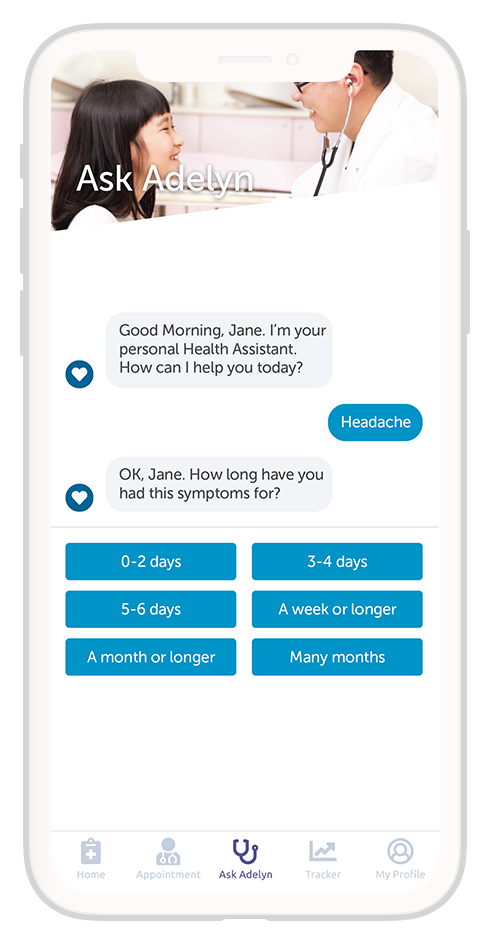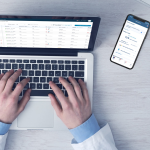Telemedicine application
Telemedicine application for Healthway Medical Corporation
Background
Healthway Clinics, has over 150 private clinics in Singapore, faced the challenge of providing accessible and convenient healthcare services to its patients, particularly in situations where physical visits to clinics are not feasible or convenient. In light of this challenge, there is a growing need for a telemedicine application that enables patients to connect with healthcare providers remotely, thereby overcoming barriers such as distance, transportation limitations, and scheduling constraints. By implementing a telemedicine application, Healthway Clinics aims to improve patient access to quality healthcare services, enhance patient satisfaction, and streamline the delivery of care while maintaining high standards of medical professionalism and efficiency.
Objective
My objective was to design a user-friendly and intuitive tele health mobile application for HMC that would facilitate seamless virtual consultations between patients and healthcare providers, while maintaining the high standards of care and professionalism associated with the clinic.
Process
Research
To understand the needs and preferences of both patients and healthcare providers, I conducted extensive research through a variety of methods, including:
- User Interviews: I interviewed patients to understand their experiences with traditional healthcare services and their expectations from a telehealth platform. Additionally, I interviewed healthcare providers to gather insights into their workflows, communication preferences, and requirements for conducting virtual consultations.
-
Competitive Analysis: I conducted a thorough analysis of existing telehealth applications to identify strengths, weaknesses, and opportunities for improvement. This helped me gain insights into best practices and emerging trends in the telehealth industry.
-
User Surveys: I distributed surveys to a sample of patients and healthcare providers to gather quantitative data on their preferences, pain points, and expectations regarding telehealth services.
Design
Based on the insights gathered during the research phase, I proceeded to design the telehealth mobile application for HMC. The key design considerations included:
-
User-Centric Design: I focused on designing a user-friendly interface that would cater to the needs of both patients and healthcare providers. This involved creating intuitive navigation, clear call-to-action buttons, and easy-to-understand workflows.
-
Appointment Scheduling: I incorporated a user-friendly appointment scheduling feature that allowed patients to easily book virtual consultations with their preferred healthcare providers. The scheduling system included options for selecting appointment times, specifying the reason for the consultation, and receiving reminders and notifications.
-
Video Consultations: I integrated a secure and reliable video conferencing feature that enabled patients to conduct virtual consultations with their healthcare providers in real-time. The video consultation interface was designed to be simple and intuitive, with options for sharing medical records, images, and other relevant information during the consultation.
-
Electronic Health Records (EHR): I designed a secure EHR system that allowed healthcare providers to access and update patient records remotely. The EHR system included features for viewing medical history, documenting consultation notes, prescribing medications, and sending follow-up instructions to patients.
-
Payment Integration: I integrated a secure payment gateway that allowed patients to conveniently pay for virtual consultations and other medical services directly through the app. The payment system supported multiple payment methods and provided transparent pricing information to users.
Prototype Testing
Once the initial design was completed, I conducted prototype testing with a group of representative users to gather feedback and identify any usability issues or areas for improvement. The prototype testing process involved:
-
Usability Testing: I observed users as they interacted with the prototype and solicited feedback on their overall experience, ease of navigation, and satisfaction with the features and functionalities.
-
Feedback Collection: I collected feedback from users through surveys, interviews, and direct observation, capturing their thoughts, preferences, and suggestions for improvement.
Iterative Design
Based on the feedback gathered during prototype testing, I iterated on the design of the telehealth mobile application, making refinements and improvements to address user feedback and enhance the overall user experience. This iterative design process involved multiple rounds of testing and refinement until the final design met the needs and expectations of both patients and healthcare providers.
Conclusion
The telehealth mobile application designed for HMC represents a user-centric solution that addresses the evolving needs of patients and healthcare providers in the digital age. By providing a seamless platform for virtual consultations, appointment scheduling, and electronic health records management, the application aims to enhance access to healthcare services while maintaining the high standards of care and professionalism associated with HMC. Through a collaborative and iterative design process, the application has been tailored to meet the specific needs and preferences of HMC’s patients and healthcare providers, ensuring a user-friendly and intuitive experience for all users.





